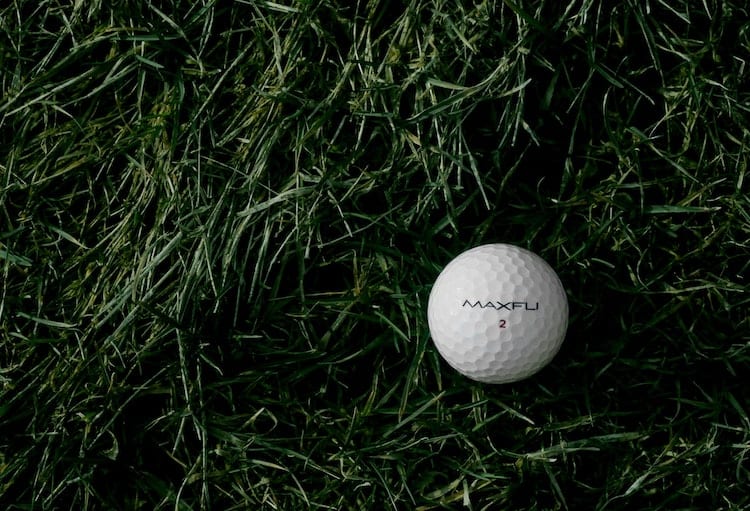
If you are new to the game of golf, you may be curious to know why each golf ball you buy has a number on it.
In this article, we’ll help shed some light on this and go into some further detail about the numbers on golf balls.
What The Number on a Golf Ball Means
The main reason that manufacturers put numbers on golf balls is to help golfers properly identify their ball while on the golf course. It’s not uncommon for two or more players in a group to play the same brand of golf ball.
69 of the Top 100 professional golfers on the PGA Tour play a Titleist Pro V1 or Pro V1x. That stat alone shows the importance of having a different identification number on each golf ball if at all possible.
Golfers never want to hit the wrong golf ball during a round. If this happens, it results in a costly two-stroke penalty for the golfer who struck the wrong ball. That can ruin a golfer’s scorecard just as easily as a double bogey!
When buying brand new golf balls, you may see a number on them that is anywhere from 1 to 3 digits. Here is some insight as to what those digits mean.
One-Digit Number
Most golf balls have a single-digit number on them that is placed right underneath the brand name. This is put on the golf ball purely for identification purposes. The number is put there to help golfers avoid careless penalties during their rounds.
Here’s how having a single-digit number on a golf ball can come in handy. Let’s assume that you and one of your playing partners both play yellow Bridgestone E6 golf balls since this type of golf ball helps limit slicing.
It would be nearly impossible to tell the difference between your playing partner’s ball and your ball. This is where having different numbers on the golf balls helps. You and your partner will simply let each other know on the first tee what the number is on the ball that you are hitting.
Most golf ball manufacturers put either a 1, 2, 3 or 4 on their golf balls. In rare instances, some companies will put a number from 0 to 9 on their golf balls.
Most brands use colors that are red or black for the numbers. Most companies will even let you customize the number that is on your golf balls for a small fee.
Two-Digit Number
Golf balls with a double-digit number show their respective compression rating. What does compression rating mean? It’s simply a way to measure the hardness level of a golf ball.
A golf ball with a lower compression rating of 60 to 80 is usually best for a beginner golfer or folks with a slower swing speed. Golf balls with a higher compression rating are better suited for male golfers or people with a fast swing speed. A simple way to remember this is that higher numbers mean a higher amount of hardness.
Not many brands print compression ratings on golf balls anymore. That was a popular trend back in the 1990s, but it’s no longer relevant in the game of golf today.
Three-Digit Number
Have you ever seen a golf ball with a triple-digit number on it? The three digits are letting you know the number of dimples on the golf ball. Most golf balls that use this feature have a dimple pattern of between 300 and 400 dimples.
It should be noted that if you see a golf ball with 100 on it, it’s not referring to the number of dimples but the compression rating.
A golf ball with more dimples isn’t necessarily better than a golf ball with fewer dimples. For the most part, this is just a marketing tactic used by golf ball manufacturers.
What to Do if You Have The Same Brand and Number Golf Ball as Your Golf Partner
Every once in a while, you and one of your playing partners may opt to use the same brand of golf ball with the same number on it. When this happens, you simply need to find a way to make a clear differentiation between the two golf balls. How would you go about doing this?
The best way to do this is with a permanent marker. Many golfers take a Sharpie and draw a smiley face or their favorite symbol on their golf ball for good luck. Other golfers prefer to mark out whatever number is on the ball and write their favorite number on it instead.
Another simple fix is to keep the same brand of golf ball but try a different sleeve from the dozen. With most brands, they assign a different number to each of the four sleeves in the box. You could also ask your playing partner to pull a golf ball from a different sleeve if they have any extra.

